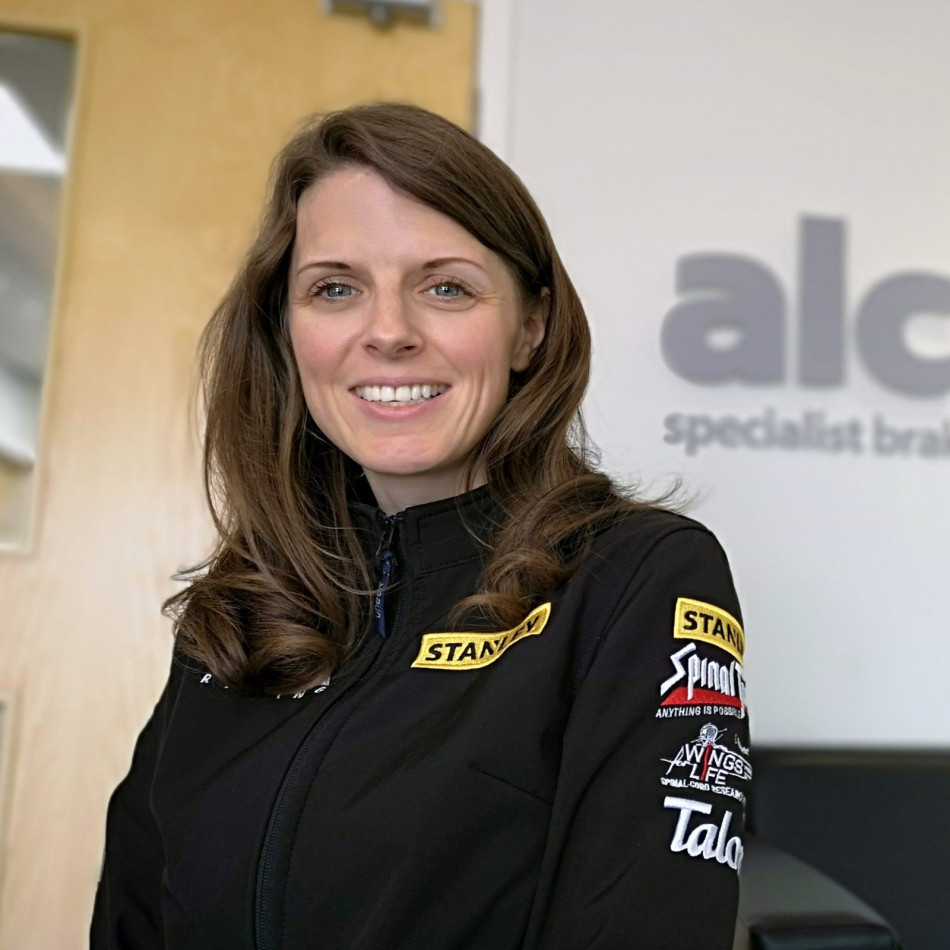AUTO #29 - Creating access points
As well as acting on abuse of disabled parking spaces worldwide, FIA Disability and Accessibility Commission President Nathalie McGloin is looking to attract 5,000 disabled participants to motor sport in the next few years. She admits it’s a tough goal but adds that meeting exacting targets is what the FIA does best

The past year has been an extraordinarily busy period for what is a relatively new body within the FIA structure, but after some intense effort on the part of everyone involved with the Disability and Accessibility Commission I feel we have made genuine advances in creating a better mobility landscape for disabled drivers and a fairer, more accessible motor sport environment for disabled competitors.
In the realm of mobility, one thing we particularly wanted to do is raise awareness about abuse of disabled parking spaces and in order to do that created a video entitled ‘Would You?’
It is a very hot topic and one that affects disabled drivers everywhere. The abuse of disabled parking spaces
is disgraceful and most of the time it is entirely casual, with people insisting: “I’ll only be five minutes.”
Those five minutes may mean nothing to that person, but to a disabled driver they could be hugely important and denying them what is often the only practical access theyare afforded is unacceptable.
And that’s the message we wanted to pursue. We wanted the video to fulfil the same function as anti drinkdriving adverts by making this kind of behaviour socially unacceptable, to create a stigma around that casual abuse of disabled spaces.
I think we’ve created something impactful and thought-provoking, and I really hope it will make people think twice about their behaviour.
We have also continued our work with the International Transport Forum to update the global database on Blue Badge reciprocity. It’s important that disabled motorists can access information regarding the rules on Blue Badge acceptance and use in foreign countries. This is especially true in Europe where a post-Brexit environment could look quite different for many drivers.
I’m glad to say we’ve made some positive steps forward in this regard and together with the ITF we are looking at the best mechanisms by which an expanded database could be utilised. Hopefully we’ll have a solution in place by the end of 2020.
In Sport we’ve spent a great deal of time making rules in the FIA’s International Sporting Code (ISC) more consistent and user-friendly.
In the past, regulations governing disabled drivers in motor sport have been written in something of ad hoc fashion, reacting to circumstances asand when they occurred. We wanted to overhaul those rules to make them work for today’s motor sport and so that we can increase participation but without compromising on safety.
In that regard, a key advance we’ve made is with the introduction of a Certificate of Adaptations. We have lots of cases where drivers have had specific adaptations to their car, but when it came to scrutineering race officials had no measures to deal with such adaptations and the only
response was to put that disabled driver into a separate class of their own. It might seem hard to believe but one of these cases involved perhaps the world’s most famous disabled racing driver – Alex Zanardi.
That is not what we want. We want drivers to compete on a level playing field. So to ensure they are treated in a consistent manner within the rules we introduced the Certificate of Adaptations. This details what modifications have been made and will be provided by the FIA for competition vehicles not in compliance with the corresponding homologation and/or technical rules because of those changes.
We will only accept requests for vehicles intended for competitions included in the International Sporting Calendar or with regulations specifically requesting such clarification, but in those cases the certificate will act as a passport for that car and driver, making it easier for them to compete on level terms with able-bodied drivers. The changes to the ISC to facilitate this were passed by the FIA Annual General Assembly in December.
I’m also pleased that in 2019 we created a new mandatory racing sticker for non-ambulant drivers. This is designed to help marshals and race officials identify cars where the driver may need assistance in extricating themselves following a track incident or stopping due to mechanical failure. This should encourage drivers who may feel insecure in the time they need for egress and it alerts safety officials as to whether they need assistance. It’s a simple way of raising confidence among potential competitors and keeping officials informed.
The Commission is also creating a grant for disabled competitors at grassroots levels. This is focused on non-ambulant drivers whose egress times might be longer. The grant would enable them to invest in the highest levels of fireproof clothingand equipment such as fuel cells. It
will reassure competitors, officials and ASNs that in the event of a driver with a slower egress time being involved in an incident, steps have been taken to ensure they stay safe.
With all these projects we hope to make motor sport more accessible. It’s my goal to attract 5,000 more disabled participants to motor sport over the next few years – behind the wheel, in technical and team roles
and as officials and volunteers. That may seem like an ambitious goal, but over the decades the FIA has become specialised at meeting tough targets – in safety, innovation and in engineering prowess – and I believe that while this is a lofty ambition, it is one we can meet. I want disabled youngsters to look at a Formula 1 champion and think, ‘That’s something I can do.’

 Facebook
Facebook Twitter
Twitter






